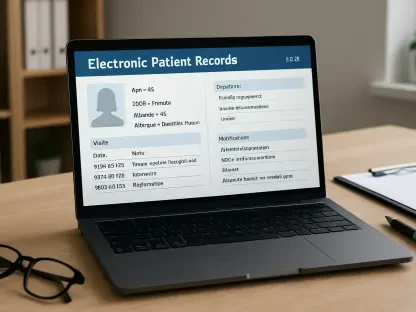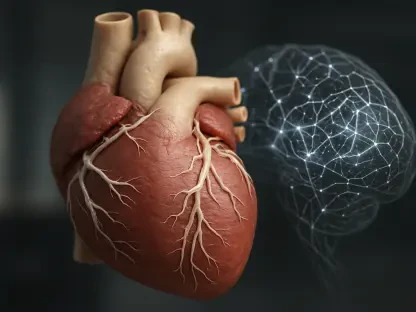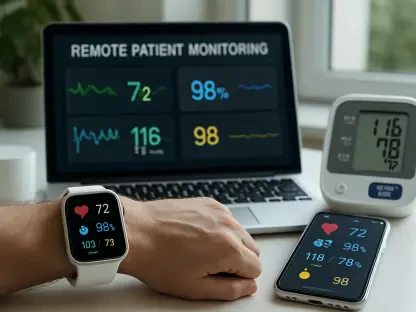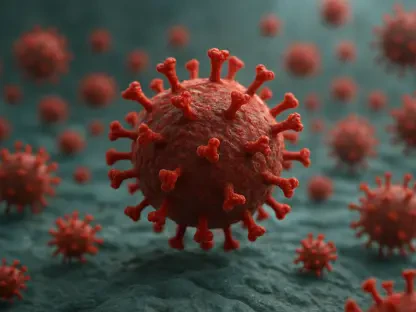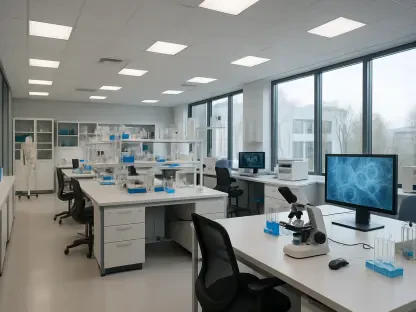In a world where cancer continues to challenge global health systems, the role of cutting-edge technology in providing effective solutions has never been more critical, particularly through the innovative use of nuclear medicine. Medical radioisotopes, tiny yet powerful tools, are transforming the landscape of cancer treatment by offering precise diagnostic and therapeutic options. These radioactive substances, harnessed through advanced nuclear technology, enable doctors to target cancer cells with unprecedented accuracy while minimizing harm to surrounding healthy tissues. Recent international collaborations have spotlighted their potential, bringing together experts from various fields to enhance production, supply, and application methods. This growing focus not only underscores the importance of radioisotopes in modern healthcare but also highlights the urgent need for robust systems to ensure their availability. As global partnerships strengthen, the journey of these isotopes from laboratory to patient bedside reveals a promising frontier in the fight against cancer.
Revolutionizing Healthcare with Nuclear Medicine
Targeted Therapies through Radioisotopes
The application of medical radioisotopes in cancer treatment represents a significant leap forward in personalized medicine, offering hope to millions of patients worldwide. These isotopes, such as lutetium-177 and actinium-225, are integral to therapies like targeted radionuclide therapy, which delivers radiation directly to cancerous cells. By attaching to specific molecules that seek out cancer markers, radioisotopes can destroy tumors while sparing healthy tissue, a precision that traditional treatments often lack. This approach has shown remarkable success in treating cancers like prostate and neuroendocrine tumors, where conventional methods fall short. Moreover, ongoing research continues to expand the range of isotopes and their applications, with clinical trials exploring new combinations to tackle even the most resistant forms of cancer. The collaboration between nuclear scientists and medical professionals is crucial to refining these therapies, ensuring they meet the stringent safety and efficacy standards required for widespread use.
Beyond the therapeutic potential, radioisotopes play a vital role in diagnostics, enabling early detection that can dramatically improve patient outcomes. Techniques like positron emission tomography (PET) scans rely on isotopes such as fluorine-18 to provide detailed images of metabolic activity within the body, often revealing cancer before symptoms manifest. This early insight allows for timely intervention, which is critical in a disease where every moment counts. Hospitals equipped with cyclotron facilities can produce these isotopes on-site, reducing dependency on external supply chains and ensuring fresher, more effective materials for scans. However, the challenge lies in scaling production to meet global demand, as shortages can delay critical diagnoses. International efforts to streamline production and distribution are underway, emphasizing the need for shared expertise and infrastructure to bridge gaps in access, especially in underserved regions where such technology remains scarce.
Supply Chain Challenges and Innovations
Ensuring a steady supply of medical radioisotopes remains a complex hurdle in their widespread adoption for cancer care. Production often involves sophisticated nuclear reactors or particle accelerators, facilities that are not universally available and require significant investment to maintain. Many isotopes have short half-lives, meaning they decay rapidly and must be used within hours or days, complicating logistics across long distances. Disruptions in supply chains, whether due to geopolitical issues or technical failures, can lead to critical shortages, directly impacting patient treatment schedules. To address this, partnerships between governments, research institutions, and private companies are focusing on diversifying production sites and developing alternative methods, such as using smaller, more accessible accelerators. These initiatives aim to create a more resilient network, ensuring that no patient is left waiting due to a lack of essential materials.
Innovative solutions are also emerging to tackle the logistical challenges of radioisotope delivery. Advances in transport technology and real-time tracking systems help optimize the journey from production to hospital, minimizing delays despite tight time constraints. Additionally, some regions are investing in regional hubs for isotope production, reducing the need for long-haul shipments and enhancing local access. Collaborative agreements, often facilitated by international nuclear agencies, encourage knowledge sharing on best practices for handling and storage, further safeguarding the integrity of these sensitive materials. While these efforts show promise, the scale of the challenge requires sustained commitment and funding to build a truly global framework. The focus remains on balancing efficiency with safety, ensuring that every step of the supply chain adheres to rigorous standards to protect both healthcare providers and patients from potential risks.
Global Collaboration for Broader Impact
Building Expertise through Education
The advancement of medical radioisotopes in cancer treatment hinges on cultivating a skilled workforce capable of navigating the complexities of nuclear medicine. Educational initiatives, often supported by international nuclear organizations, are pivotal in training the next generation of scientists, engineers, and healthcare professionals. Programs that integrate hands-on experience with theoretical learning provide students with a deep understanding of radioisotope production and application, preparing them for real-world challenges. Partnerships with universities and high schools aim to inspire young minds by showcasing career paths in nuclear science, emphasizing its potential to save lives. Such efforts ensure a steady pipeline of talent, essential for sustaining innovation and addressing the growing demand for specialized expertise in this field.
Beyond formal education, mentorship and internship opportunities play a critical role in bridging the gap between academic knowledge and practical application. Collaborations between global agencies and academic institutions facilitate exchanges where aspiring professionals can work alongside seasoned experts on cutting-edge projects. These experiences not only enhance technical skills but also foster a global perspective on the ethical and societal implications of nuclear technology in healthcare. Roundtable discussions and workshops further enrich learning by encouraging dialogue on emerging trends and challenges, ensuring that trainees are well-versed in both current practices and future possibilities. This comprehensive approach to capacity building is vital for maintaining the momentum of advancements in radioisotope therapies, ensuring that expertise keeps pace with technological progress.
Strengthening Safety and Community Recovery
Safety remains a cornerstone of expanding the use of medical radioisotopes, given the inherent risks associated with radioactive materials. International forums and collaborative research initiatives focus on developing stringent protocols for handling, storage, and disposal, minimizing exposure risks for both medical staff and patients. Joint projects between nuclear safety institutes and healthcare facilities aim to refine best practices, often drawing on lessons learned from past nuclear incidents to inform current standards. These efforts underscore a shared commitment to protecting public health while harnessing the benefits of nuclear medicine, ensuring that safety measures evolve alongside therapeutic innovations to address new challenges as they arise.
Equally important is the focus on community recovery in areas impacted by nuclear events, where trust in nuclear technology must be rebuilt alongside infrastructure. Engagement with local stakeholders during international missions often includes discussions on rehabilitation plans, integrating medical advancements like radioisotopes into broader recovery strategies. These dialogues highlight the potential of nuclear medicine to contribute to societal well-being, offering tangible benefits that can help restore confidence in the technology. By addressing environmental and social concerns through transparent communication and actionable plans, global partnerships demonstrate a holistic approach. Looking back, these efforts have laid a foundation for sustainable progress, balancing innovation with responsibility to ensure that the benefits of radioisotopes reach those in need while fostering resilience in affected regions.




